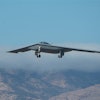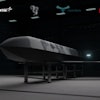The aerospace and defense industry is expected to maintain stable, but moderate, growth, according to a report from Fitch Ratings released Wednesday.
Fitch said most commercial aerospace segments remain in a strong upturn, and better-than-expected orders in 2006 suggest that peak deliveries in the current cycle for most segments lies beyond 2007.
Fitch believes that cash deployment decisions will continue to be a key determinant of A&D rating actions in 2007. Fitch calculates that the top 15 North American A&D companies had approximately $21 billion of cash on hand at the end of the third quarter.
Large acquisitions are not expected in 2007, but there should be moderately sized transactions as the large A&D players look to round out portfolios and diversify into service businesses.
Commercial Aerospace
As expected, most segments of the commercial aerospace industry were strong in 2006, and this strength should continue in 2007, although Fitch expects that growth rates will likely moderate. Orders in 2006 were stronger than expected, and Fitch now projects that most parts of the commercial aerospace industry will not reach a delivery peak until 2008 at the earliest.
The strength in demand continues to be driven by markets outside of North America, particularly large developing economies. This suggests that current demand is the result of both a cyclical upturn in some markets and secular growth in other markets. Risks to the outlook include supply chain constraints and event risk. Fitch does not expect an economic downturn in 2007, but the commercial aerospace industry would be negatively affected by economic weakness, particularly in some overseas markets that are currently key drivers of some segments in the industry.
Large Commercial Aircraft
Fitch expects large commercial aircraft deliveries from Boeing and Airbus to rise to approximately 900 aircraft, an increase of nine percent in 2007. Deliveries in 2007 should be split nearly equally between the two manufacturers, and there is some upside to the delivery estimate depending on production rate decisions. The key surprise in 2006 has been the strength of orders coming off the record year in 2005.
Commercial aftermarket growth should moderate in 2007 after a strong 2006 in which some parts of the market were apparently boosted by demand at U.S. legacy carriers. Fitch expects this high-margin segment to grow in line with air traffic, so revenues should rise in the mid-single digits. Longer-term, aftermarket revenues are supported by trends such as the aging of the regional jet and Airbus fleets, global air traffic growth, and the growth of low cost carriers.
The regional aircraft market continues to be the commercial aerospace industry's weakest segment in 2006, with deliveries likely to be down about 12 percent. However, this small segment consisting of regional jets and turboprops made by Bombardier, Embraer, and ATR will likely bottom out in 2006 and rebound in 2007 as a result of rising deliveries at Embraer and very healthy turboprop deliveries.
The business jet market should continue to be strong in 2007, with expected deliveries up approximately 12 percent. Aircraft delivered in 2007 could reach 1,000 units, coming off a stronger than expected 2006 in which deliveries should increase 19 to 20 percent. The key development in this segment is the increasing percentage of orders from outside North America. Some manufacturers are reporting that 50 percent or more of orders this year have come from overseas, double the historical level. Other drivers of the strong market include healthy corporate profits, increased use of jet cards, and replacement demand.
Defense
The Democrats' victory in the recent elections and the pending change at the top of the Department of Defense have added some uncertainty to the U.S. defense credit outlook, but Fitch does not expect these changes will materially affect defense spending in the next several years, for several reasons. The FY2007 defense budget has already been enacted, and the formulation of the FY2008 budget request is well under way. There have been reports that the Democrats could push for an increase in defense spending in January to rebuild the capabilities of U.S. ground forces, which could benefit suppliers to the Army and Marine Corps in the next 12-24 months.
Fitch believes there are also several political factors that will mitigate any negative impact from the elections on defense spending. Democrats have a slim majority in both houses, and on a straight party vote they can not override a presidential veto. It is often difficult to get work done in the Senate without 60 votes, and the Democrats have only 51 seats, including two independents are assumed to vote with the Democrats. Additionally many of the new Democratic congress members are more moderate that old line Democrats and some are pro-Defense. With the 2008 elections just over the horizon, it is unlikely that Democrats will be too tough on defense spending, thereby reinforcing the perception that the Republicans are more focused on national security issues.
However, the defense companies can expect a less friendly environment in Washington as a result of the election. 'Oversight' seems to be the current buzzword in Washington, so it can be expected that the defense contractors will face more pressure due to high program costs and ethics issues. Consistent with increased oversight, there could be a struggle over the use of supplemental budgets to fund the operations in Iraq and Afghanistan. These funds do not go through the same detailed review as the regular defense budget, and Congress has already required that the president submit future requests with the regular budget. However, it is not clear whether Congress has the authority make that a requirement.
Moving beyond the recent political changes, high DoD spending levels continue to be the foundation of solid credit quality in the defense sector. By some estimates defense spending including supplemental funds for the War on Terror is at the highest level since World War II. Supplemental budgets have clouded the analysis of defense spending in the past few years, but these supplemental budgets have protected the core DoD budget from cuts and the supplemental budgets are increasingly including some modernization funds that benefit the prime defense contractors. Backlogs at U.S. defense contractors continued to rise in the first three quarters of 2006, supporting the case for continued revenue growth in 2007.


















